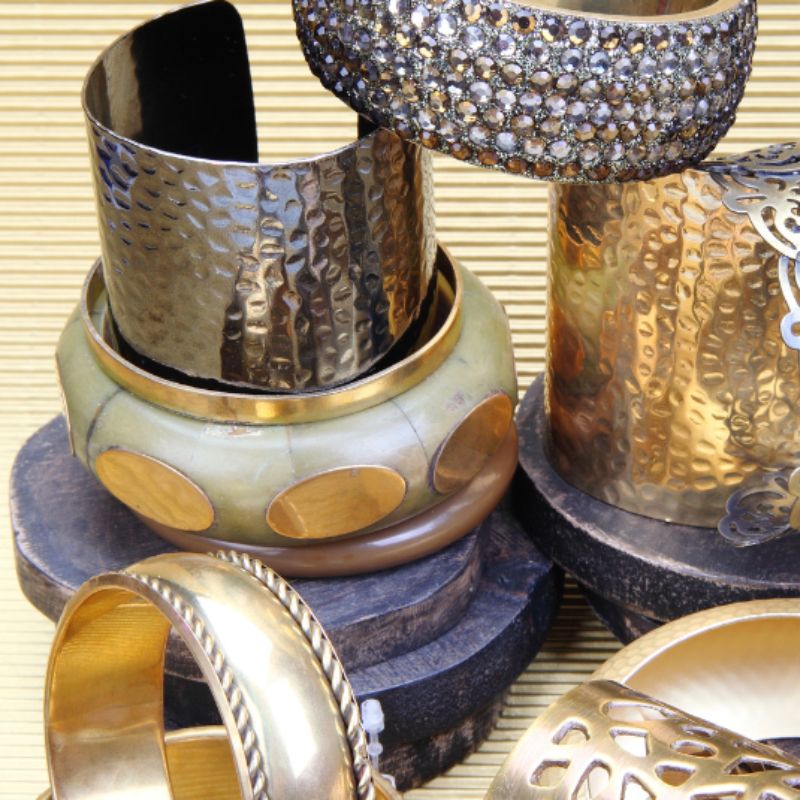Bracelets
Bracelets, cylindrical-shaped ornaments worn encircling the wrist or upper arm, have been one of the most popular forms of ornamentation since prehistoric times. Incredibly varied, bracelets are a universal form of jewellery. Historically and culturally, they have been worn singly or in multiples by both genders. Bracelets have been used for protective and decorative purposes, in rituals, and to indicate one's social status.
History
After neck ornaments, bracelets for the wrist, arm, or ankle are perhaps the oldest form of jewellery. One of the first written records of humans wearing bracelets is in the Hebrew Scriptures. Some of the oldest bracelet artifacts were constructed of bronze and gold and date back to the Bronze Age. Most were penannular, or oval, with expanding, trumpet-shaped ends. The gold bracelets were typically unadorned, and hammered and bent into shape, while bronze bracelets were decorated with patterns and designs.
Cultural Examples
Bracelets have been worn by cultures all over the world since ancient times. Bracelets and other forms of jewelry were considered especially important in warm geographic regions, such as India and Africa, where few items of clothing were worn. Although both genders historically have worn bracelets, they seem more typically associated with women, especially in contemporary times. Cultural variations may be seen in the wearing of bracelets, Some cultures in India wear anklets and armlets, as well as bracelets, while this is not as common in Western nations. In addition, Westerners often view bracelets as transitory, removing them at the end of the day. Married women in India, however, wear conch and glass bangles for life..






